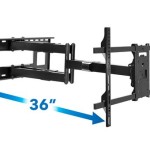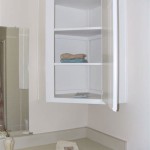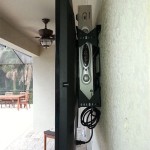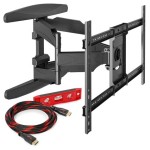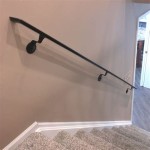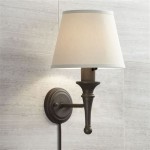Ryobi Wall Mount Tool Holder: A Comprehensive Guide
The Ryobi wall mount tool holder system offers a versatile and customizable solution for organizing tools and accessories within a workshop or garage. Designed with modularity in mind, the system allows users to tailor their storage configuration to meet specific needs and spatial constraints. This article delves into the various aspects of the Ryobi wall mount tool holder system, covering its features, benefits, installation process, and potential drawbacks.
The core of the Ryobi system revolves around the rail, which is typically constructed from durable, high-impact plastic or metal. These rails are designed to be mounted directly onto walls, providing a sturdy foundation for hanging various tool holders and accessories. The Ryobi system's selling point is its adaptability; the rail provides the backbone for a tailored storage that is designed to meet distinct requirements. Compatibility is key, as only Ryobi accessories are designed to reliably attach to these rails.
The Ryobi wall mount tool holder system caters to a wide range of tools and accessories. Holders are available for power tools like drills, saws, and impact drivers, as well as hand tools, batteries, chargers, and even garden tools. This comprehensive solution means the system can be used to organize and store an array of equipment, reducing clutter and maximizing space. Furthermore, this is supported with the holders being easily repositioned along the rail, allowing for quick adjustments as tool collections evolve.
The construction of the individual tool holders varies depending on the intended use. Some holders are designed to cradle the tool's body, while others utilize hooks or pegs to suspend the tool from its handle or other features. The materials used in construction are typically a combination of high-impact plastic and metal, ensuring durability and load-bearing capacity. Weight capacities vary; hence, it is imperative to check the specifications of each holder to ensure it can adequately support the tool it is designed to hold. Exceeding these limits could lead to damage to the holder, the tool, or the wall itself.
Key Advantages of the Ryobi Wall Mount Tool Holder System
The Ryobi wall mount tool holder system provides several notable benefits that contribute to a more organized and efficient workspace. These advantages include enhanced space utilization, improved tool accessibility, and increased safety.
The primary advantage of this system is its effective use of vertical space. By mounting tools on the wall, the system frees up valuable floor space, workbenches, and shelf space. This is particularly beneficial in smaller workshops or garages where space is at a premium. In environments where clutter can pose a hazard, keeping tools off the floor and neatly organized can also contribute to a safer workspace.
The system enhances tool accessibility. With tools neatly organized and within easy reach, users can quickly locate the tool they need without having to rummage through cluttered drawers or toolboxes. This can save time and frustration, ultimately leading to increased productivity. Regular use of the system means that tools are always stored in their designated locations. This consistency makes it easy to find the necessary tools without taking time to search for them, even when working on extensive projects.
The system also directly contributes to greater workshop safety. By providing designated storage locations for tools, the system helps to prevent tools from being left lying around, reducing the risk of trips, falls, and other accidents. Storing tools securely also prevents them from being accidentally knocked over or damaged, further enhancing safety. It is vital to ensure that the rails are installed securely in order to reliably support their intended loads, which guarantees the tools will remain in their intended places.
Installation Process and Best Practices
The installation of the Ryobi wall mount tool holder system is relatively straightforward, but careful planning and execution are essential to ensure a secure and functional installation. This section outlines the key steps involved in the installation process and offers best practices for achieving optimal results.
The first step is to plan the layout of the system. This involves determining the desired location for the rails and the placement of the individual tool holders. Considerations should be given to the types of tools to be stored, their size and weight, and the frequency with which they are used. The most frequently used tools should be placed in easily accessible locations. Before installing anything, it's crucial to mark the intended locations of the rails on the wall using a level and a measuring tape. This ensures that the rails are installed straight and at the desired height.
Next, the rails must be securely attached to the wall. This typically involves using screws to fasten the rails to wall studs. Using a stud finder is key in locating the studs within a wall, to secure the rail to this strong foundation. If studs are not available in the desired location, appropriate wall anchors must be used to provide adequate support. It is crucial to select the correct type of wall anchor based on the weight of the tools that will be stored on the rail, ensuring safety and longevity. Installation also demands that the manufacturer's instructions regarding screw size and spacing are followed precisely. Using the wrong hardware or spacing can compromise the integrity of the installation.
Once the rails are securely mounted, the individual tool holders can be attached. The Ryobi system typically utilizes a simple clip-on or slide-on mechanism for attaching the holders to the rails. Ensure each holder is securely fastened to the rail before placing any tools on it. Regularly inspect the rails and holders for signs of wear or damage. Replace any damaged components promptly to maintain the system's integrity and prevent accidents.
Potential Drawbacks and Considerations
While the Ryobi wall mount tool holder system offers numerous advantages, it is essential to acknowledge its potential drawbacks and considerations before investing in the system. These limitations primarily encompass compatibility restrictions, weight limitations, and potential cost concerns, depending on the scale and needs of the user.
One of the main limitations of the Ryobi system is its compatibility. The tool holders are specifically designed to work with Ryobi tools and accessories. While some users may be able to adapt the system to accommodate tools from other brands, this may require modifications or the use of aftermarket adapters. This limitation can be a significant drawback for users who own a diverse collection of tools from various manufacturers. Furthermore, it can become costly to replace old storage solutions with the new system, along with the need to purchase Ryobi-compatible attachments, creating an additional barrier to entry.
The system also has weight limitations. While the rails and tool holders are designed to be durable, they are not indestructible. Exceeding the specified weight capacity of the system can lead to damage or failure. It is crucial to carefully consider the weight of the tools to be stored and select holders with appropriate weight ratings. Overloading the system can compromise its structural integrity and potentially lead to accidents. Additionally, the wall and mounting hardware must also be capable of supporting the weight of the system and tools.
The cost of the Ryobi wall mount tool holder system can also be a consideration, especially for users who require a large number of rails and tool holders to organize their entire tool collection. While the individual components may be relatively affordable, the overall cost can add up quickly. It is important to consider the budget and carefully plan the system to prioritize the most essential tools and storage needs. The price tag of each individual tool holder multiplied by the amount of tools one wants to store can greatly add up, and it is essential to be aware of this when considering adopting this solution.

Ryobi Tools Link One Tool Holder

Ryobi 18v One Cordless Tools Wall Hanger Holder Etsy

Ryobi Tools Link One Tool Holder

Ryobi Tools Link One Tool Holder

Ryobi Tools Estante Organizador De Herramientas Enlace

5 Of The Coolest S In Ryobi Link Modular Storage System

Ryobi Tools Estante Organizador De Herramientas Enlace

Drill Tool Holder Wall Mount Organiser Storage 5pcs For Ryobi One Plus

Ryobi 4v Usb Tool Holder Peg Board Wall Mount Free Shipping Conusa Made In Usa

Ryobi Link Hanging Shelf Stm402

